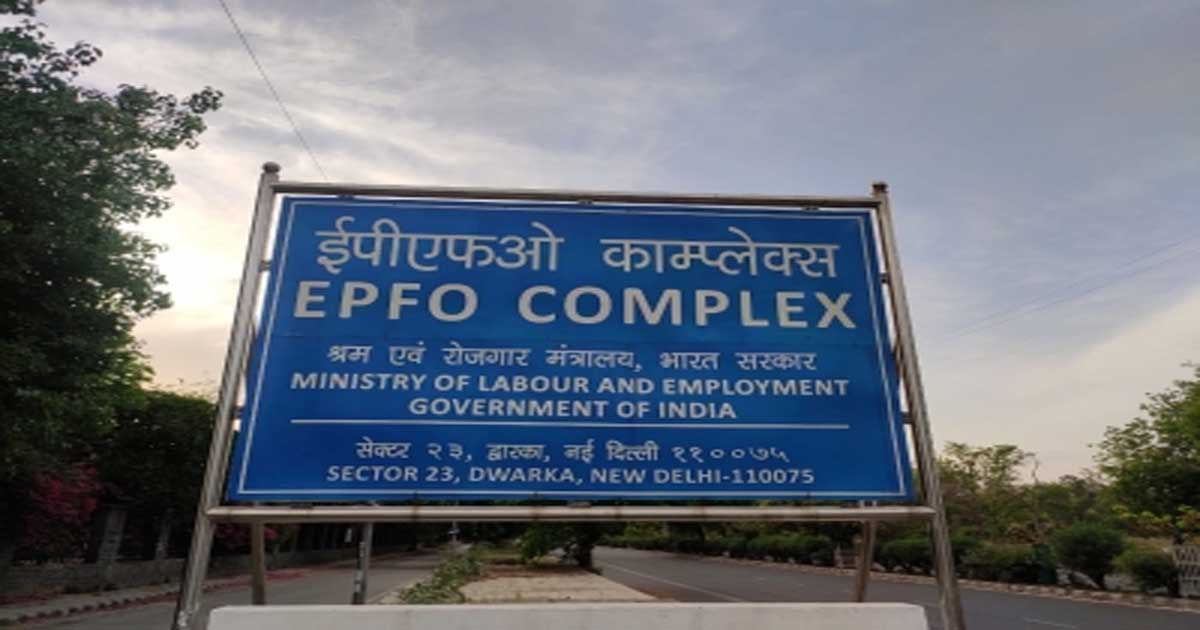Business
Budget’s growth focus to face macro challenges

The Budget is focused on growth, but will face macro challenges, Japanese brokerage Nomura said in a report.
First, the ability of the government — both central and states — to spend 2.9 per cent of GDP on capex will face execution hurdles. Identification of projects, on-the-ground implementation, coordination with different agencies — all typically lead to a smaller amount being spent than allocated.
Second, if revenues disappoint or other expenses rise (higher subsidies or more allocation towards rural employment, for example), then there is a risk of the capex amount being pruned.
Third, we see other growth challenges. India is currently in the midst of a business cycle recovery. However, we expect India’s growth to decelerate from H2 CY2022 onwards, reflecting weaker consumption demand from low income households (due to scarring effects and high inflation), weaker export growth and continued sub-par private capex due to low capacity utilisation.
Rising oil prices (a negative term of trade effect) and tighter global financial conditions are also growth headwinds.
Hence, if the capex-led push is not fruitful, then the growth slowdown could be material. We currently expect GDP growth of 8.7 per cent y-o-y in FY22 (reduced recently from 9.2 per cent owing to the impact of Omicron.
Nomura said we continue to expect higher inflation and wider current account deficits, largely due to rising commodity prices, although an expansionary budget may also play an incremental role. On inflation, while food prices appear in check, core inflationary pressures are rising across clothing, household goods and services and personal care items.
Firms are passing higher input prices onto consumer prices. Domestic fuel prices are currently on hold, but will likely be adjusted higher after the state elections. We expect services price inflation to also rise as the economy opens.
We expect elevated global commodity prices, high inflation and steady domestic demand to result in higher imports, widening the current account deficit to 2.6 per cent of GDP in 2022, up from a deficit of 1.3 per cent in 2021.
The Budget is unambiguously focused on reviving growth, via higher public capex. Capital expenditure generally results in a higher growth multiplier, so the continued focus on infrastructure spending, including support to states to spend on capex, is important at a time when private capex is sluggish.
The government expects to miss its budgeted fiscal deficit target of 6.8 per cent of GDP for FY22 (year ending March 2022) marginally, with an actual outturn of 6.9 per cent (Figure 1). The sharp rise in receipts of corporate taxes, robust income taxes and strong indirect taxes (in part due to higher fuel excise duties in the first half of the year) have resulted in net tax revenues exceeding budget estimates by Rs 2.2trn (1.0 per cent of GDP). However, contrary to our expectation, the government has revised up its capex commitment for the year by Rs 485bn (0.2 per cent of GDP), though this primarily reflects the government clearing its liabilities of the recently divested Air India. Also, in line with our expectations, revenue expenditure (revex) has been higher by Rs 2.4trn (1.0 per cent of GDP), reflecting the second wave support package, food and fertiliser subsidies, export incentives and extra spending by some departments. Finally, the disinvestment target has now been calibrated lower by Rs 970bn (0.4 per cent of GDP).
Business
Sensex, Nifty open higher on positive global cues

Mumbai, Oct 15: Indian stock markets opened on a positive note on Wednesday, taking cues from the upbeat global sentiment.
The Sensex climbed 243 points, or 0.30 per cent, to trade at 82,273, while the Nifty rose 79 points, or 0.31 per cent, to start the day at 25,225.
Commenting on the Nifty’s technical outlook, experts said that though the 20-day SMA stepped in yesterday, to limit the extent of the drop, we prefer to give more weightage to the bearish engulfing pattern, thus acknowledging the prevailing bearish bias.
“Meanwhile, we remain equally prepared to switch sides, if Nifty manages to push beyond 25230. However, we will wait for a break beyond 25330 to play directional upsides,” they added..
Buying was seen across most sectors, with heavyweights like Bajaj Finserv, Bajaj Finance, NTPC, L&T, Power Grid, BEL, Bharti Airtel, Trent, and Asian Paints leading the gains. These stocks moved up by as much as 1.2 per cent in early trade.
However, some pressure was seen in select counters such as Tech Mahindra, Axis Bank, Infosys, and Titan Company, which slipped up to 1.2 per cent.
In the broader market, the Nifty MidCap index gained 0.38 per cent, while the Nifty SmallCap index advanced 0.20 per cent — indicating a positive trend beyond the frontline indices.
Among sectoral indices, Nifty IT and Financial Services rose 0.6 per cent each, while PSU Bank and Realty indices also traded higher — reflecting a broadly optimistic market mood.
Experts said that investors are likely to track global market trends, crude oil prices, and institutional flows for further direction.
“In the current environment of heightened volatility and mixed market cues, traders are advised to maintain a cautious “buy-on-dips” approach, particularly when using leverage,” analysts said.
“Booking partial profits during rallies and maintaining tight trailing stop-losses is recommended to manage risk. Fresh long positions should be considered only if the Nifty sustains above the 25,300 mark,” they added.
Business
Explained: EPFO overhauls withdrawal rules to boost transparency, ease access for 30 crore members

New Delhi, Oct 14: The Employees’ Provident Fund Organisation (EPFO) has restructured its partial withdrawal regulations, combining 13 distinct clauses into three main categories: Essential Needs, Housing Needs, and Special Circumstances. This change aims to make it easier to access provident fund savings.
For the nearly 30 crore members who collectively own a corpus of about Rs 30 lakh crore, the reform aims to make the withdrawal process quicker, simpler, and more transparent.
The revised framework, referred to as EPFO 3.0, has standardised withdrawal limits.
Depending on the goal, members can now access up to 100 per cent of their eligible provident fund balance, which includes employer and employee contributions. However, at least 25 per cent of the EPF balance needs to stay in the account in order to maintain a safety net for retirement.
This implies that members can keep the required balance while withdrawing up to 75 per cent of their total corpus.
Additionally, the new regulations standardise the requirements for services. In the past, there were specific requirements for each type of withdrawal, such as five years of service for housing purposes and seven years for marriage-related withdrawals.
All partial withdrawals are now subject to a single 12-month minimum service period, which streamlines the procedure and removes any ambiguity.
Members will no longer need to provide documentation of their withdrawals under the “Special Circumstances” category, which is a significant relaxation. In the past, withdrawals under this heading required proof of emergencies, such as natural disasters or job loss.
The new clause, which permits members to leave without giving a reason, is anticipated to reduce red tape and expedite approvals.
The EPFO has also increased the withdrawal limits for marriage and education-related withdrawals. Instead of the previous cap of three combined withdrawals, members can now make up to 10 withdrawals for education and five for marriage.
Stricter guidelines for final settlements are also introduced by the reforms, though. In contrast to the previous two-month eligibility window, members can now only apply for an early final settlement 12 months after quitting their job and for pension withdrawal 36 months later.
In the event of a job loss, the 25 per cent minimum balance requirement only applies to partial withdrawals; it does not apply to full settlements.
While it is anticipated that the simplified framework will increase efficiency and transparency, workers who are laid off or have experienced extended periods of unemployment may find it difficult to obtain their provident fund savings immediately during a time when they may need it most, due to the revised settlement timelines.
Business
Silver hits record high above $52.50 as safe-haven demand fuel rally

Mumbai, Oct 14: Silver prices soared to an all-time high above $52.50 an ounce on Tuesday, boosted by a historic short squeeze in London and strong demand for safe-haven assets amid global economic uncertainty.
Spot silver rose as much as 0.4 per cent to $52.58 an ounce in London, breaking the previous record set in January 1980 when the billionaire Hunt brothers tried to corner the market.
Gold prices also climbed to a new record, marking eight consecutive weeks of gains, supported by rising geopolitical tensions and expectations of US interest rate cuts.
The rally in silver comes amid concerns over liquidity in the London market, which has triggered a worldwide rush to secure the metal.
Prices in London are trading at a rare premium compared to New York, prompting traders to fly silver bars across the Atlantic — a costly move usually reserved for gold — to benefit from higher prices.
The premium stood at around $1.55 an ounce on Tuesday, down from $3 last week.
Adding to the squeeze, silver lease rates in London — the cost of borrowing the metal — surged above 30 per cent for one-month contracts last Friday, making it expensive for traders to maintain short positions.
The situation worsened as strong demand from India in recent weeks further reduced available supply, following earlier shipments to New York amid fears of US tariffs.
Experts said the latest surge in both gold and silver reflects heightened market uncertainty.
Gold prices have jumped nearly 60 per cent this year, crossing the $4,100 mark for the first time, supported by geopolitical tensions, rate-cut expectations, and strong buying by central banks and investors.
Key US economic data such as inflation and retail sales are due later this week, but analysts warn that if the government shutdown continues, the release of these reports — including jobs data — could be delayed.
-

 Crime3 years ago
Crime3 years agoClass 10 student jumps to death in Jaipur
-

 Maharashtra1 year ago
Maharashtra1 year agoMumbai Local Train Update: Central Railway’s New Timetable Comes Into Effect; Check Full List Of Revised Timings & Stations
-

 Maharashtra1 year ago
Maharashtra1 year agoMumbai To Go Toll-Free Tonight! Maharashtra Govt Announces Complete Toll Waiver For Light Motor Vehicles At All 5 Entry Points Of City
-

 Maharashtra1 year ago
Maharashtra1 year agoFalse photo of Imtiaz Jaleel’s rally, exposing the fooling conspiracy
-

 National News1 year ago
National News1 year agoMinistry of Railways rolls out Special Drive 4.0 with focus on digitisation, cleanliness, inclusiveness and grievance redressal
-

 Maharashtra11 months ago
Maharashtra11 months agoMaharashtra Elections 2024: Mumbai Metro & BEST Services Extended Till Midnight On Voting Day
-

 National News1 year ago
National News1 year agoJ&K: 4 Jawans Killed, 28 Injured After Bus Carrying BSF Personnel For Poll Duty Falls Into Gorge In Budgam; Terrifying Visuals Surface
-

 Crime1 year ago
Crime1 year agoBaba Siddique Murder: Mumbai Police Unable To Get Lawrence Bishnoi Custody Due To Home Ministry Order, Says Report












